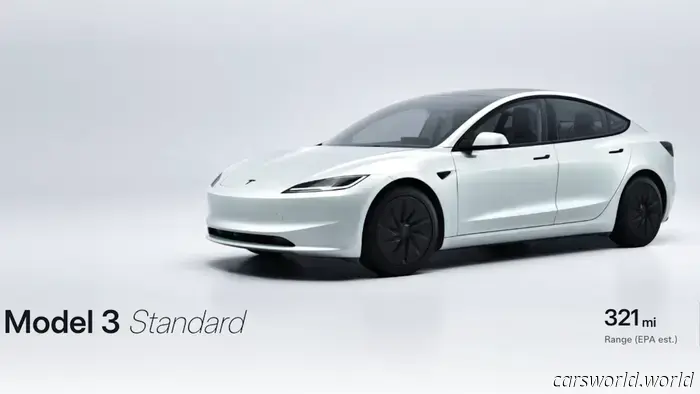
The $40K Tesla Model 3 is the sole new vehicle available in the U.S. that features manual side mirrors.
Tesla
The latest car news and reviews, no nonsense
Our free daily newsletter delivers the most important stories straight to you every weekday.
It's 2025, and my teenager can't distinguish between a phone call and a FaceTime call; to her, they’re the same. Every day, we depend on technology that once seemed unbelievable to our parents, and our grandparents would have dismissed as a Hollywood dream in their time. Nevertheless, Tesla, which positions itself as a tech company more than an automotive manufacturer, has just introduced a new car featuring manually adjustable mirrors.
The new base versions of the Tesla Model 3 and Model Y, referred to as the "Standard" trim, eliminate several features to offer a more affordable starting price. While some changes, such as a manually adjustable steering column through a lever instead of a touchscreen, can be seen as improvements, others raise questions about who at this tech-savvy company thought these were wise choices. Was it you, Elon?
I can't recall any new cars currently on the market in the United States that come with manually adjustable mirrors. As colleagues noted, even the Mitsubishi Mirage—which is no longer manufactured yet still available at dealerships nationwide for $17,000—has power mirrors. The starting price of the standard Model 3 is $38,630, while the Model Y begins at $41,630, still offering power-adjustable mirrors but excluding the power-folding feature.
The Model 3 has replaced leather with cloth seats and used a mix of plastic and cloth for cabin trim accents. The small rear screen for adjusting the rear air vents has been removed, replaced by manually adjustable vents like those found in most cars on the road today. Ventilation for the front seats has been eliminated, along with rear bench heating. Ambient lighting is no longer available, and surprisingly, there’s no AM/FM radio.
Changes that will significantly affect ownership include a reduced battery capacity of 69.5 kWh, slower charging speeds capped at 225 kW, a one-second increase in the zero-to-60 mph time, and decreased driving range. The Standard trim is rated for 321 miles, compared to the Premium's 363. Autosteer has also been removed.
Another aspect of the new Standard trim is its lower price. By omitting all the aforementioned features, Tesla manages to price this trim $5,500 less than the next version up.
It's important to note that Tesla's approach with the Standard trim mirrors that of the broader automotive industry. An entry-level model usually comes with minimal features, and to access more options, enhanced aesthetics, and improved performance, buyers need to upgrade to higher trims, often at a higher cost. In this regard, Tesla isn't doing anything particularly outrageous or incorrect. Additionally, I fully support lower-priced vehicles—especially in the current economic climate.
This situation is laden with irony. A company that views itself as pioneering, technologically advanced, and claims to be far ahead of traditional automakers is launching an electric vehicle with manual mirrors.
Indeed, you can still find new vehicles equipped with manual mirrors today, but you'll need to look in Europe. The Fiat Panda I rented in Portugal earlier this year had them, as did a Fiat 500 in Italy. These cars, priced between $18,000 and $20,000, are as basic as they come and feature gas engines that have existed for decades. It's amusing to think that these vehicles share something in common with the newest Tesla Model 3.
Have a tip? Email us at [email protected]


Other articles
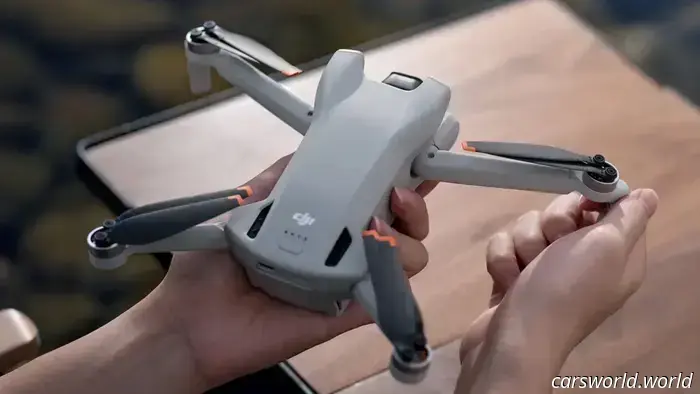 The Cheapest DJI Drones Are Even More Affordable During Amazon's October Prime Days.
DJI continues to produce some of the finest drones for filming car content and other subjects. Here are some excellent Prime Day discounts on its basic models.
The Cheapest DJI Drones Are Even More Affordable During Amazon's October Prime Days.
DJI continues to produce some of the finest drones for filming car content and other subjects. Here are some excellent Prime Day discounts on its basic models.
 Porsche’s Latest Playground Features a Racetrack That Passes Through Its Structure | Carscoops
The new facility is scheduled to welcome the public in 2027.
Porsche’s Latest Playground Features a Racetrack That Passes Through Its Structure | Carscoops
The new facility is scheduled to welcome the public in 2027.
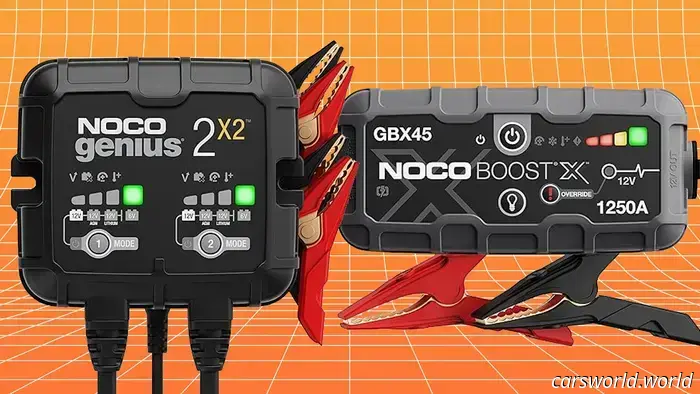 NOCO Jump Starters are priced under $100 during Amazon’s October Prime Day Event.
NOCO offers some of the most cost-effective car battery jump starters and winter-storage maintainers. Currently, they are available at even better prices due to Amazon's October Prime Days.
NOCO Jump Starters are priced under $100 during Amazon’s October Prime Day Event.
NOCO offers some of the most cost-effective car battery jump starters and winter-storage maintainers. Currently, they are available at even better prices due to Amazon's October Prime Days.
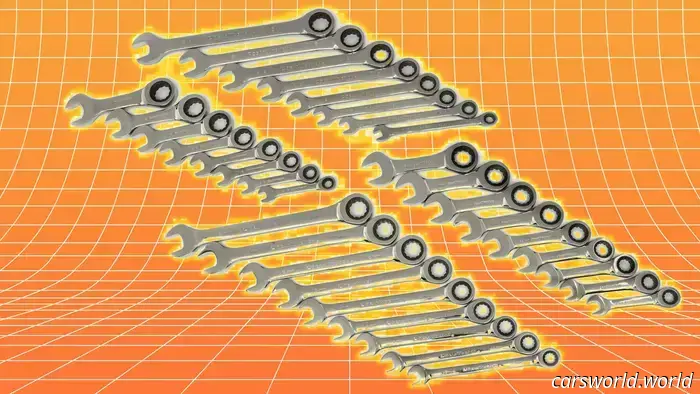 This amazing 34-piece wrench set is an outstanding bargain during Amazon's October Prime Day sale.
This set of ratcheting wrenches features both long and stubby handles, all equipped with a ratcheting end, available in both SAE and metric sizes. Gearwrench also has additional discounts for Prime Day.
This amazing 34-piece wrench set is an outstanding bargain during Amazon's October Prime Day sale.
This set of ratcheting wrenches features both long and stubby handles, all equipped with a ratcheting end, available in both SAE and metric sizes. Gearwrench also has additional discounts for Prime Day.
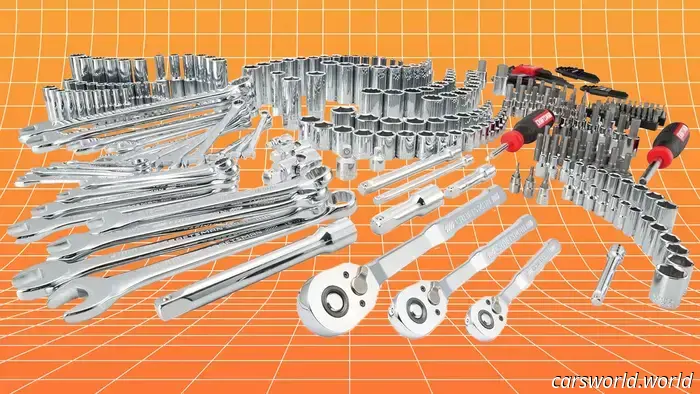 DJI
We may earn revenue from the products featured on this page and also take part in affiliate programs. Learn more ›
The latest in automotive news and reviews, no nonsense.
Our daily newsletter, available at no cost, delivers the most important stories straight to your inbox every weekday.
A few aerial shots can significantly enhance the quality and energetic appeal of car content. Currently, DJI, one of the leading brands in drones, is offering some attractive discounts on its beginner-friendly drones, making it easier than ever to start flying with high-quality gear at a lower price.
I also discovered a promotion for a phone gimbal. I own an Osmo 2 and have been quite impressed with it— I can only imagine how great the Osmo 7 must be! In any case, check out these offers and see if the prices are appealing enough to inspire you to take to the skies with a new drone. It’s certainly worth exploring the “related items” section on Amazon as well, as there are additional discounts on bundles that include extra batteries and other equipment that you might find useful.
$68: DJI Osmo 7 Phone Gimbal (24% off!)
$159: DJI Neo Mini Drone (20% off!)
$239: DJI Mini 4K (20% off!)
$335: DJI Mini 3 (20% off!)
$439: DJI Mini 3 + Video Controller (20% off!)
Explore further savings at Amazon’s DJI store. Additionally, although not on sale, this waterproof hard case for the DJI Mini 3 would be an excellent travel accessory if you're planning to take your drone on road trips or to the racetrack!
These prices were accurate at the time of publication, but may have changed by the time you view this post.
So many deals, so little time. The Drive team is here to help you save on all types of gear for your vehicle and garage.
Currently, there are excellent deals on Craftsman hand tools and power tools available on Amazon.
DJI
We may earn revenue from the products featured on this page and also take part in affiliate programs. Learn more ›
The latest in automotive news and reviews, no nonsense.
Our daily newsletter, available at no cost, delivers the most important stories straight to your inbox every weekday.
A few aerial shots can significantly enhance the quality and energetic appeal of car content. Currently, DJI, one of the leading brands in drones, is offering some attractive discounts on its beginner-friendly drones, making it easier than ever to start flying with high-quality gear at a lower price.
I also discovered a promotion for a phone gimbal. I own an Osmo 2 and have been quite impressed with it— I can only imagine how great the Osmo 7 must be! In any case, check out these offers and see if the prices are appealing enough to inspire you to take to the skies with a new drone. It’s certainly worth exploring the “related items” section on Amazon as well, as there are additional discounts on bundles that include extra batteries and other equipment that you might find useful.
$68: DJI Osmo 7 Phone Gimbal (24% off!)
$159: DJI Neo Mini Drone (20% off!)
$239: DJI Mini 4K (20% off!)
$335: DJI Mini 3 (20% off!)
$439: DJI Mini 3 + Video Controller (20% off!)
Explore further savings at Amazon’s DJI store. Additionally, although not on sale, this waterproof hard case for the DJI Mini 3 would be an excellent travel accessory if you're planning to take your drone on road trips or to the racetrack!
These prices were accurate at the time of publication, but may have changed by the time you view this post.
So many deals, so little time. The Drive team is here to help you save on all types of gear for your vehicle and garage.
Currently, there are excellent deals on Craftsman hand tools and power tools available on Amazon.
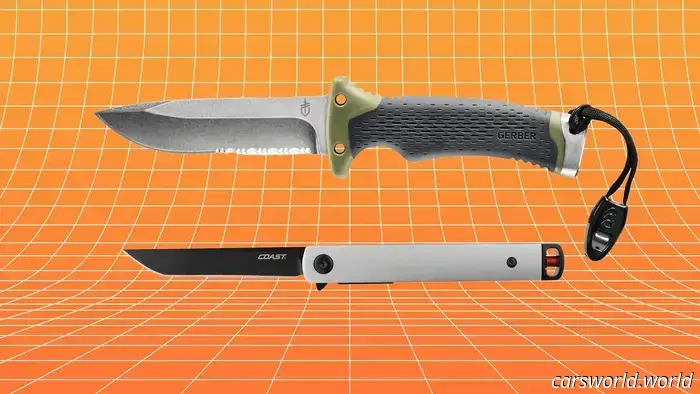 Top EDC Knife Deals for Amazon Prime Day from Coast, Gerber, and KA-BAR
You can find a high-quality pocket knife for daily carry on Amazon for under $25 at the moment.
Top EDC Knife Deals for Amazon Prime Day from Coast, Gerber, and KA-BAR
You can find a high-quality pocket knife for daily carry on Amazon for under $25 at the moment.
The $40K Tesla Model 3 is the sole new vehicle available in the U.S. that features manual side mirrors.
The removal of various features results in a significantly reduced price, though this decision is quite ironic for a company that has traditionally focused on the future and innovative technology.
